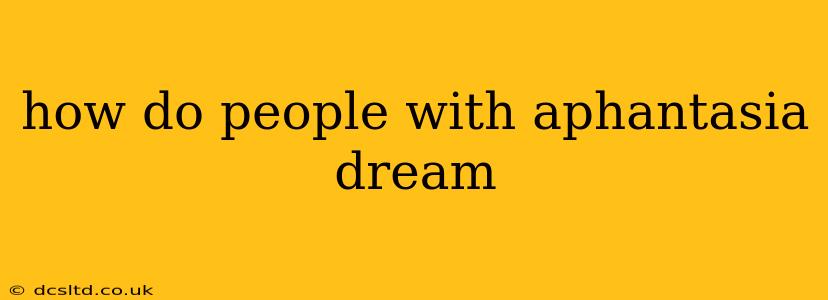How Do People With Aphantasia Dream?
Aphantasia, the inability to create mental images, is a fascinating neurological condition that affects how individuals experience their internal world. A common question surrounding aphantasia is how it impacts dreaming, a process intrinsically linked to imagery for many. While the experience of dreaming is subjective and varies widely even among those without aphantasia, individuals with the condition report dreaming differently than those with typical visual imagery.
It's important to preface this discussion by acknowledging the inherent difficulty in studying dreams. Dreams are private experiences, and self-reporting relies on memory and interpretation, both of which can be unreliable. Nevertheless, research and anecdotal evidence shed some light on the dreams of individuals with aphantasia.
Do People With Aphantasia Dream in Black and White?
This is a misconception. The absence of visual imagery in waking life doesn't automatically translate to black-and-white or entirely imageless dreams. Instead, dreams for people with aphantasia often involve different sensory modalities than visual ones.
What Sensory Experiences Do People With Aphantasia Have During Dreams?
While visual imagery might be absent or significantly reduced, other senses—sound, smell, touch, and even taste—can play prominent roles in their dream experiences. They might report dreaming primarily through soundscapes, emotional sensations, or physical feelings. The dream might feel like a vivid conversation, a strong emotional narrative, or a sequence of tactile sensations, rather than a series of visual scenes.
What Does a Dream Feel Like for Someone With Aphantasia?
The feeling of a dream for someone with aphantasia is subjective, just as it is for anyone. However, it is likely to be less visually oriented and more focused on other sensory inputs and emotional experience. Descriptions often involve strong emotions, distinct feelings, and a narrative structure, even without the supporting imagery of a typical dream.
How Does Aphantasia Impact Dream Recall?
This is another area where anecdotal evidence plays a significant role. Some people with aphantasia report vivid dream recall, but their recollections focus on feelings, actions, and dialogue rather than visual details. Others find dream recall difficult, regardless of the sensory modalities involved. There's no consistent pattern, suggesting that dream recall is influenced by factors beyond the presence or absence of visual imagery.
Is There a Difference Between Nightmares for People With and Without Aphantasia?
The experience of a nightmare differs significantly from a typical dream. While someone without aphantasia might vividly picture a horrifying scene, a person with aphantasia might experience a nightmare through intense fear, a sense of impending doom, or a visceral feeling of dread, rather than a specific visual image. The emotional impact might be equally, or even more, powerful.
Is Aphantasia Diagnosed Through Dream Analysis?
No. Aphantasia is not diagnosed through dream analysis. Diagnosing aphantasia requires a thorough assessment of an individual’s ability to voluntarily create mental imagery across different sensory modalities and circumstances. Dream analysis is a different field of study entirely, focusing on the interpretation of dreams. The presence or absence of vivid imagery in dreams might be noted as part of a broader assessment, but it is not a diagnostic criterion for aphantasia.
Can Aphantasia Affect Other Cognitive Functions?
While aphantasia primarily affects the ability to create mental images, it's important to note that it doesn't necessarily affect other cognitive functions. Individuals with aphantasia can have excellent memory, reasoning, and creative abilities. The absence of visual imagery is just one aspect of their cognitive experience.
In conclusion, dreaming for individuals with aphantasia is likely a rich and varied experience, albeit different from the predominantly visual dreams commonly reported by individuals without the condition. Future research is needed to better understand this aspect of aphantasia and how it interacts with other elements of consciousness and cognitive function.
